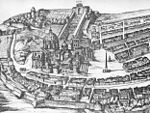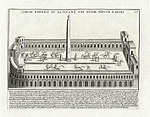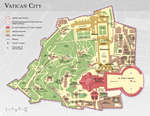Teutonic Cemetery
Catholic Church in AustriaCatholic Church in GermanyCemeteries and tombs in RomeCemeteries in Vatican CityProperties of the Holy See ... and 1 more
Source attribution

The Teutonic Cemetery (Italian: Campo Santo dei Teutonici e dei Fiamminghi, "Camposanto of the Teutons and the Flemish") is a burial site in Rome adjacent to St. Peter's Basilica. Burial is reserved for members of the Confraternity of Our Lady of the German Cemetery, which owns the cemetery. It is a place of pilgrimage for many German-speaking pilgrims. The cemetery lies entirely outside the borders of Vatican City; it is an extraterritorial property of the Holy See as designated under the Lateran Treaty of 1929.
Excerpt from the Wikipedia article Teutonic Cemetery (License: CC BY-SA 3.0, Authors, Images).Teutonic Cemetery
Roman Protomartyrs Square,
Geographical coordinates (GPS) Address Nearby Places Show on map
Geographical coordinates (GPS)
| Latitude | Longitude |
|---|---|
| N 41.9014 ° | E 12.4544 ° |
Address
Piazza dei Protomartiri Romani
Roman Protomartyrs Square
, Vatican City
Vatican City
Open on Google Maps










